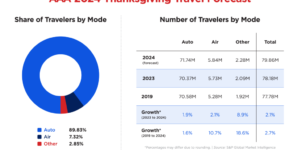 Technology-oriented insurance startups and established small mutual property/casualty insurers may find they are better off partnering than competing.
Technology-oriented insurance startups and established small mutual property/casualty insurers may find they are better off partnering than competing.
Mutual P/C insurance companies continue to face heightened competition amid an insurance industry that is being transformed by technological, economic and demographic changes. While many larger mutual carriers have addressed these market shifts by embracing innovation, a new report from A.M. Best finds some smaller mutuals lag in this area.
The report finds that these small mutuals may need to invest or secure a partner to keep up with changes.
The report also suggests that the InsurTechs themselves would benefit from partnerships because while the startups have technological expertise, they “lack the long-standing experience, market knowledge and relationships of mutuals.”
Nevertheless, despite what A.M. Best terms their “starkly different” business models, InsurTechs and mutuals are in “competition for the same potential business, and for this reason, adapting to the changing landscape could prove beneficial.”
The observation on small mutuals came in the ratings agency’s annual look at how the overall mutual insurance business is doing. In 2018, A.M. Best found that the U.S. property/casualty mutuals it rates experienced a modest deterioration in underwriting results in 2017 owing largely to catastrophic events.
However, these mutual insurers still posted growth in surplus and net premiums written.
A.M. Best’s report, “U.S. P/C Mutual Insurers: Moderate Surplus Growth Despite Elevated Losses,” states that surplus growth rose by nearly 6.0 percent during 2017, driven predominantly by $21 billion in unrealized capital gains, a 180 percent year-over-year increase.
Many rated mutuals reduced their net deferred tax assets following adoption of U.S. tax reform, which subsequently lowered surplus levels by an aggregate $9.5 billion. However, the change in unrealized gains, supplemented further by net income of $6.3 billion, more than offset the surplus hit, according to A.M. Best.
Net premiums written, which have grown every year since 2010, grew at a moderate pace of 4.4 percent in 2017. The premium increase is attributable to several lines of business for rated mutuals in 2017, particularly private passenger automobile liability, automobile physical damage and commercial automobile liability, due mostly to aggressive rate actions industrywide to remedy the surge in automobile claims frequency. Severity is also a concern. Loss settlement costs have risen, given that new vehicles are extremely complex and costly to maintain and repair.
Overall, the rated property/casualty mutuals recorded a combined ratio of 106.6 in 2017, a 3.3-point deterioration from 2016, mainly due to an uptick in the pure loss ratio from hurricane and wildfire events. An elevated underwriting expense ratio continues to compress underwriting measures, although it declined slightly in 2017. The report further notes that relatively high commission expenses still heavily influence the expense ratio, as is typical for companies such as mutuals that use independent agents.
Analysis of these A.M. Best-rated mutuals under its revised Best’s Credit Rating Methodology indicates that the companies have robust balance sheets, adequate operating performance, limited business profiles and appropriate enterprise risk management structures. “This generalized assessment of trends appears reasonable and in line with expectations based on most mutual companies’ operating philosophies to focus on the long-term financial position of the company to benefit the policyholder, as opposed to seeking maximized returns,” A.M. Best said.
Source: A.M. Best
*This story ran previously in our sister publication Insurance Journal.





















 New Hampshire High Court Invalidates GEICO Underinsured Claim Provision
New Hampshire High Court Invalidates GEICO Underinsured Claim Provision  Allstate October Catastrophe Losses of $286M Include Milton, Helene
Allstate October Catastrophe Losses of $286M Include Milton, Helene  More Than Half of All Employees in Finance, Insurance Work Remotely: Triple-I
More Than Half of All Employees in Finance, Insurance Work Remotely: Triple-I  Allstate Thinks Outside the Cubicle With Flexible Workspaces
Allstate Thinks Outside the Cubicle With Flexible Workspaces 






